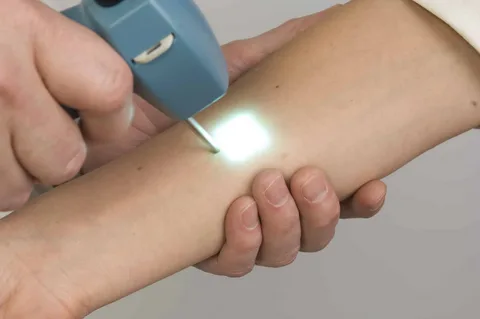Researchers at the College of Veterinary Medicine have made a remarkable discovery that could offer relief to patients suffering from vitiligo, a skin condition that causes white depigmented patches due to the destruction of melanocytes by the immune system. Published in Nature Communications, this study presents a novel treatment approach using a combination of a labor-inducing molecule, an immunosuppressant medication, and controlled UVB irradiation. The use of FDA-approved drugs expedites the journey of this promising treatment for vitiligo to clinical trials.
While existing medications mainly target the autoimmune aspect of vitiligo by preventing the destruction of melanocytes, they often fail to achieve complete and long-lasting pigmentation of the skin. Andrew White, the lead author of the study and an associate professor in the Department of Biomedical Sciences, explains that the aim of their research was to find a more durable and comprehensive method for re-pigmenting the skin. The team decided to explore controlled UVB irradiation as a potential solution.
The inspiration for this approach came from a 2013 scientific paper that revealed how UVB triggers the migration of melanocytes from hair follicles to the skin. However, the precise mechanism and control of this migration were still unknown. White admits that there was essentially no protocol available for what they were trying to achieve.
To study the disease, the team conducted experiments using mouse models. They exposed the white skin of black-coated mice to UVB, inducing the migration of melanocytes from hair follicles to the skin, as observed in the 2013 study. However, they encountered an unexpected finding—the response differed between male and female mice. Some mice exhibited significant melanocyte migration, while others showed minimal migration, regardless of the UVB exposure.
At first, the discrepancy in the results was perplexing for the researchers. White explains that the sexual dimorphism was entirely unforeseen, but when they realized its significance, it became incredibly exciting. Further investigation revealed that UVB exposure triggers a higher inflammatory response in males compared to females. This increased inflammation in male mice was found to be a result of higher production of prostaglandins, a group of molecules that are produced in response to injury and tissue damage. Literature searches confirmed that prostaglandins can stimulate melanocytes in various ways.
To verify the impact of prostaglandins, the researchers administered a prostaglandin solution to the mice’s white skin after UVB exposure. The results were astonishing. The melanocyte migration from hair to skin was significantly higher with prostaglandin, and it equaled the migration observed in male mice, even in females.
Overall, this groundbreaking research offers a potential breakthrough in the treatment of vitiligo. By combining a labor-inducing molecule, an immunosuppressant medication, and controlled UVB irradiation, the researchers have identified a promising approach to repigment the skin in a more complete and lasting manner. The use of FDA-approved drugs in this treatment combination significantly expedites the translation of this discovery into clinical trials. With further research and validation, this innovative treatment regimen could potentially provide relief to patients suffering from vitiligo and improve their quality of life by reducing social stigma associated with the condition.
*Note:
1.Source: Coherent Market Insights, Public sources, Desk research
2.We have leveraged AI tools to mine information and compile it



